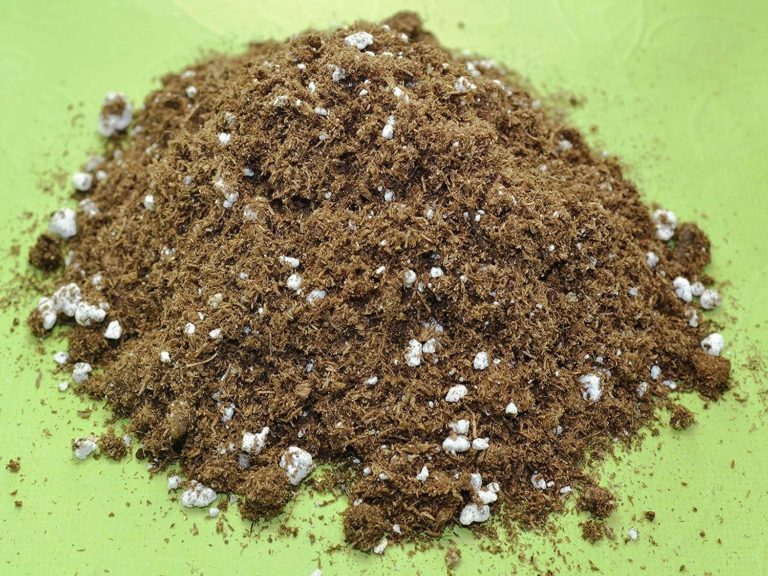What are Cyclamen Mites?
- Cyclamen mites are very tiny pests, belonging to the spider family; they are spider like and can attack African Violet plants.
- They are very small, measuring just 0.5mm in length and are usually invisible to the naked eye. You would need a magnifying glass to see them.
- Cyclamen Mites feed on plant tissues, causing damage to leaves, buds, and stems, and can quickly spread from plant to plant, causing widespread damage.
What do Cyclamen Mites look like?
-
- They are usually a light yellow or greenish-yellow color, and their bodies are elongated and narrow, giving them a spider-like appearance.
- Cyclamen Mites can be difficult to spot as they hide in the folds of leaves and crevices of flowers, where they feed on the sap of the plant.
- To identify Cyclamen Mites, it may be necessary to use a magnifying glass or microscope to see them clearly.
How do Cyclamen Mites occur in African Violet plants?
- Cyclamen Mites are often spread from infested African Violet plants to healthy ones through contaminated soil, potting mix, or tools.They can also be introduced to a growing area through the purchase of infected plants, or by contaminated cuttings.
- Once established, Cyclamen Mites can spread rapidly, as they are very small and can easily hide in the folds of leaves or the crevices of flowers.
- Cyclamen Mites are also favored by warm, dry conditions, as they can survive and reproduce more quickly in these conditions. This is why they are often more common in greenhouse and indoor growing environments, where the humidity levels are lower and the temperature is more consistent.
- In conclusion, Cyclamen Mites occur when contaminated soil, potting mix, tools, or African Violets plants are introduced to a growing area, or when the environmental conditions are favorable for the mites to survive and reproduce. Regular inspection and timely treatment are important to prevent the spread of Cyclamen Mites and to minimize damage to the African Violet plants.
Below are recommendations for African Violet potting soil & perlite:
What are the external plant symptoms of Cyclamen Mites infestation?
- Cyclamen Mites in African Violet plants target the center crown area of your plant. The crown will seem likes its growing crooked, with smaller tiny, dull, brownish leaves which are hard to touch and have a glossy look to them.
- African Violet plants infested with Cyclamen Mites have stunted crown, with hairy growth, leaves curling downwards and leaves a combination of dark yellow and rusty color. The external African Violet plant symptoms of Cyclamen Mite infestation include distorted or bubbly leaves, stunted growth, rusty leaves, and poor flowering.
- The mites create this environment by penetrating the plant tissue and sucking out the sap from the leaves, leading the African Violet plant to have stunted growth.
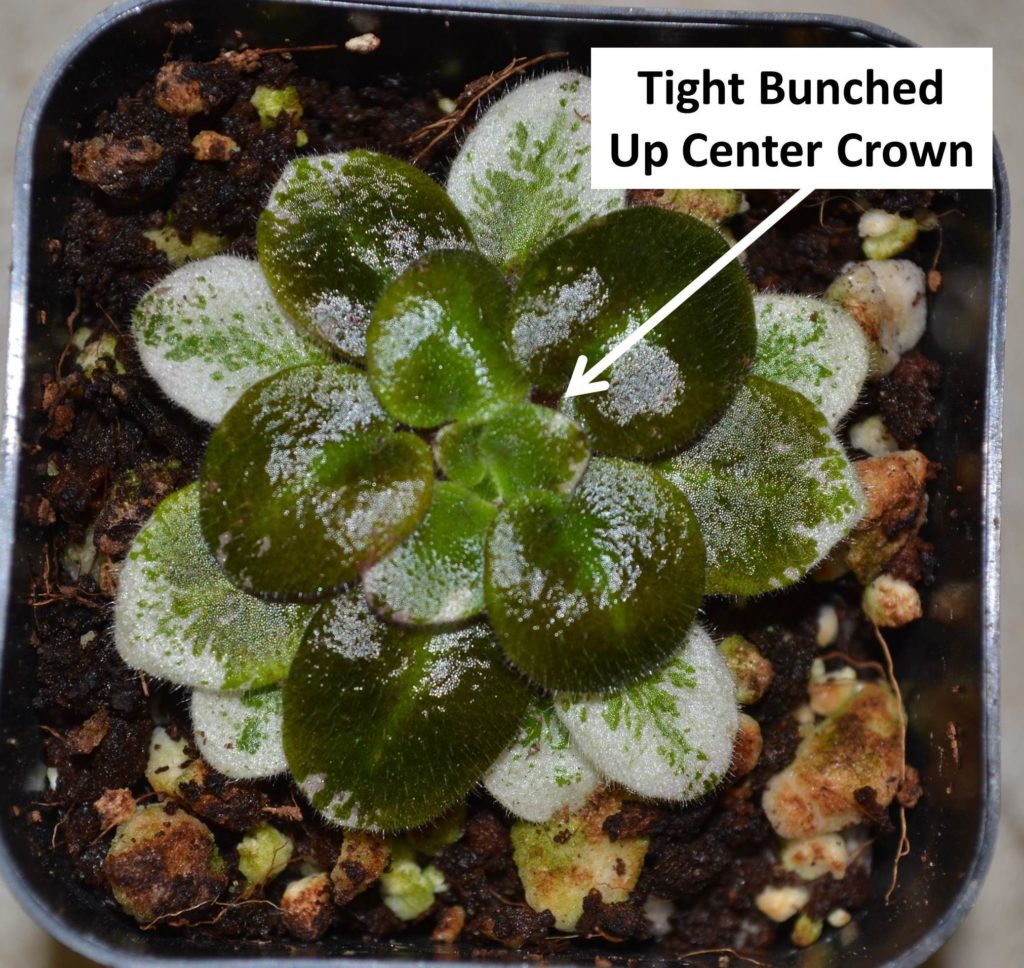
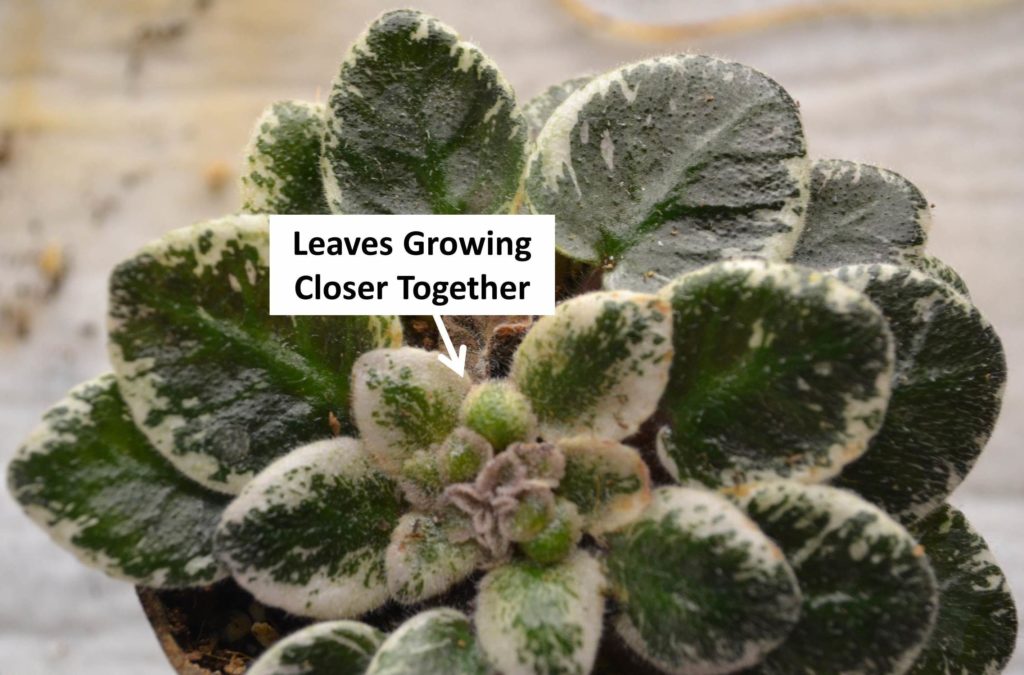
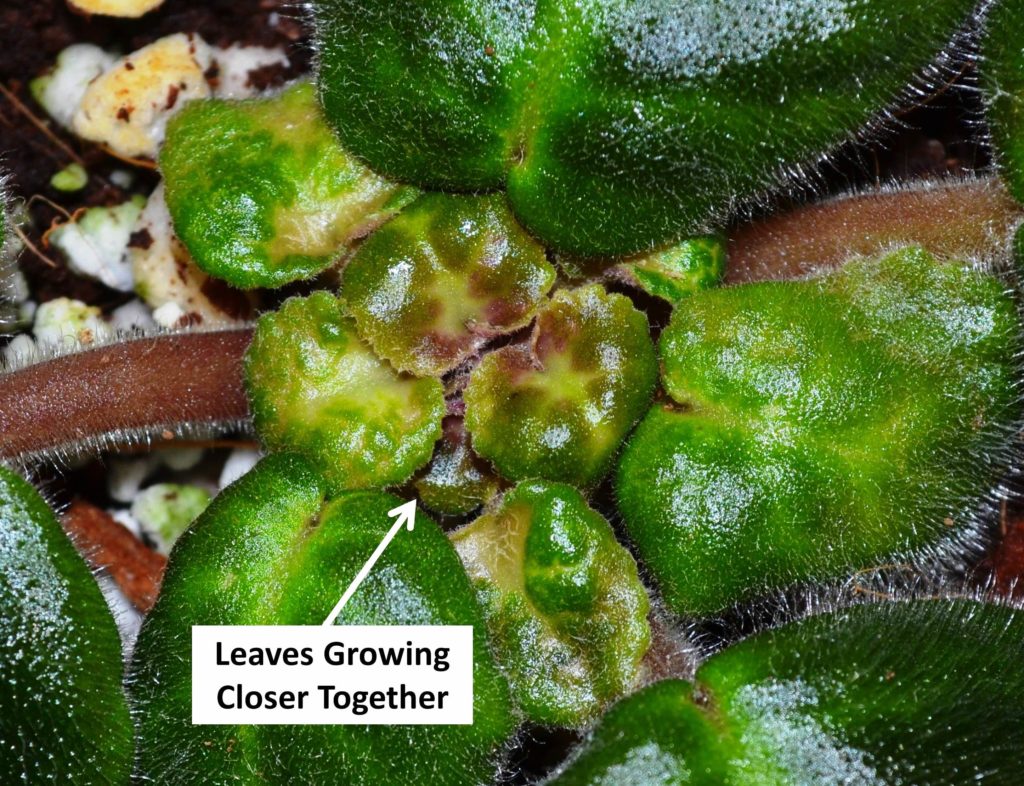
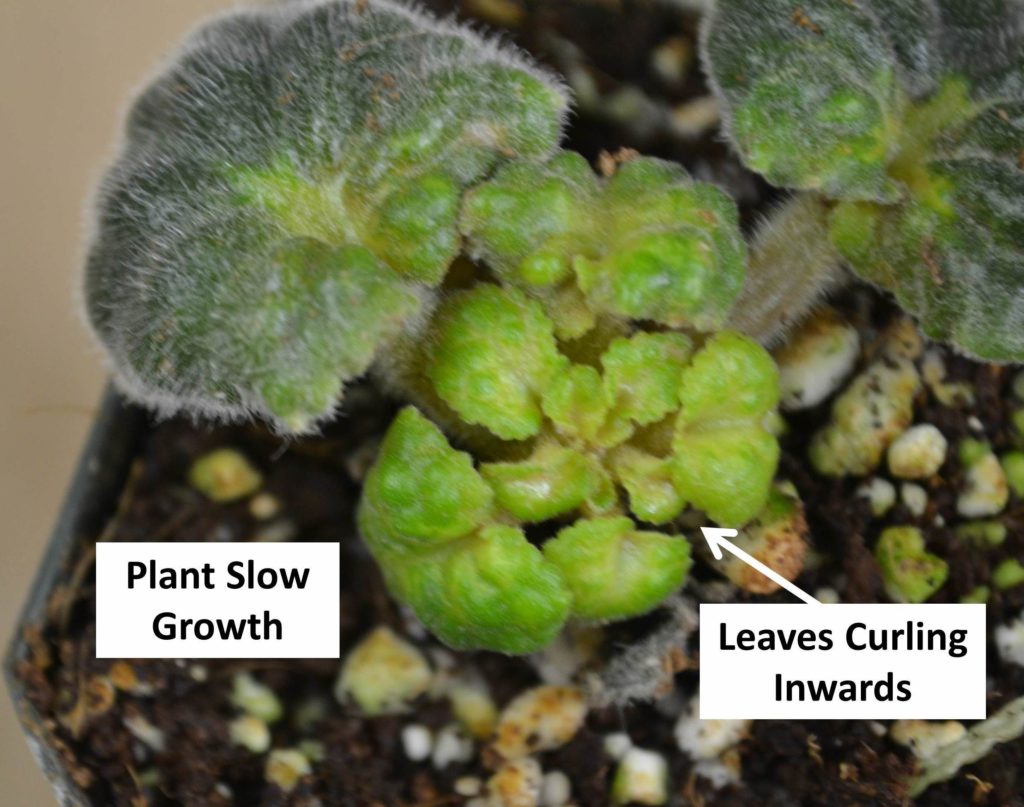
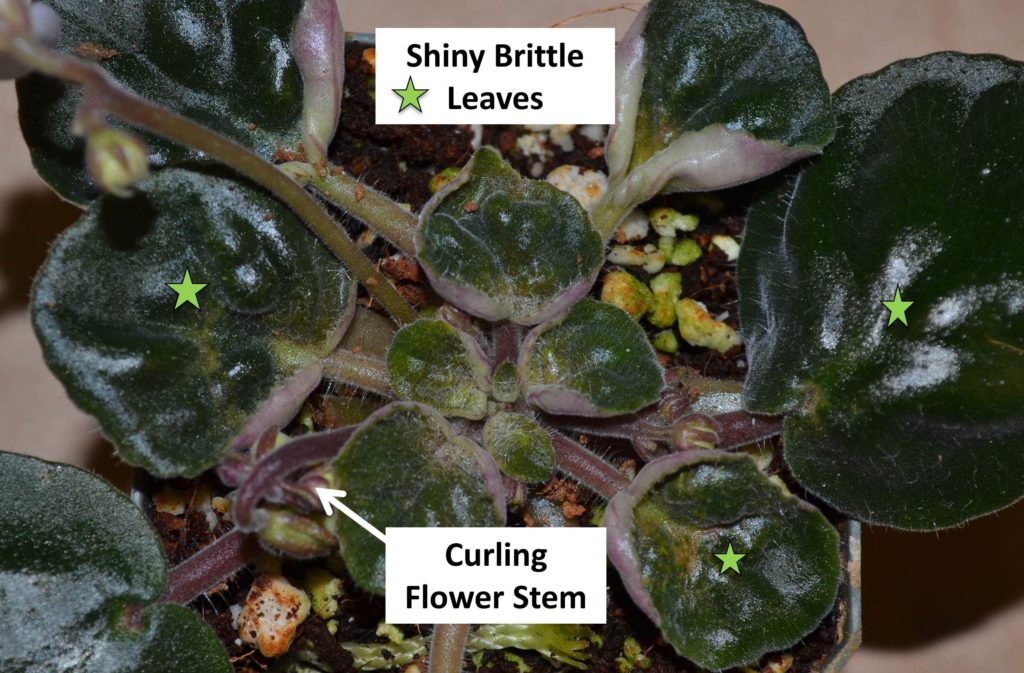
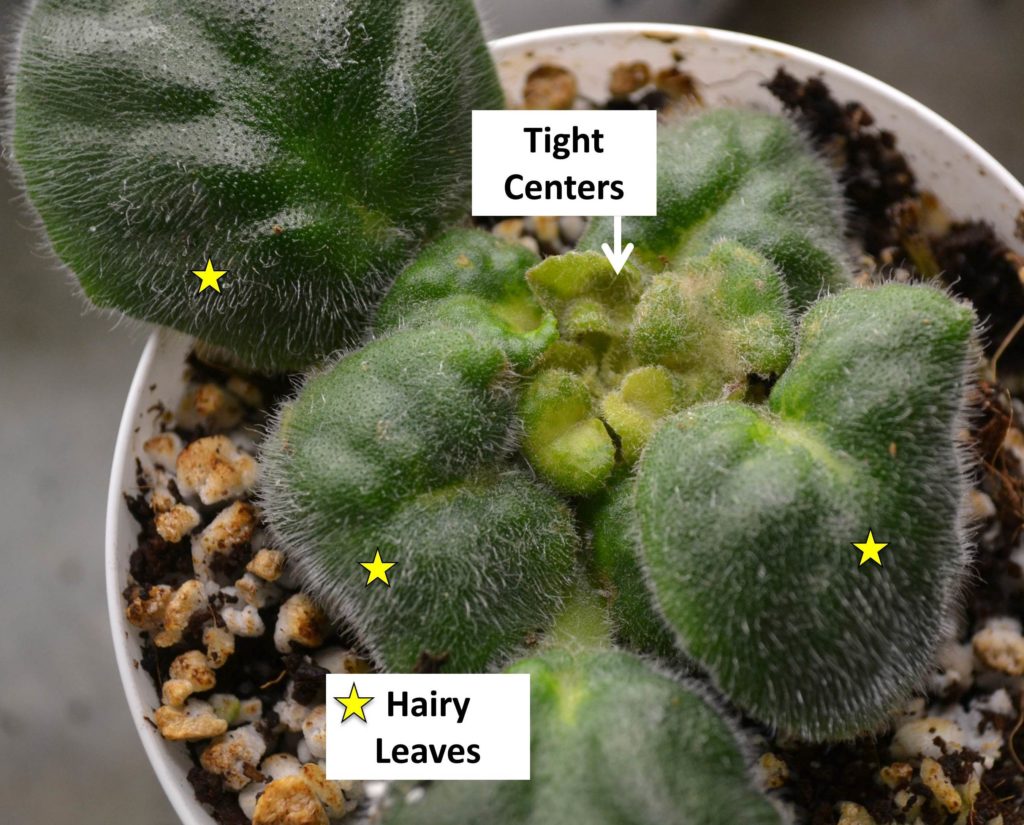
What are the internal African Violet plant symptoms of Cyclamen Mites infestation?
The internal African Violet plant symptoms of Cyclamen Mite infestation include:
- Distorted or curled leaves: The mites feed by piercing the African Violet plant tissue and sucking out the sap, which can cause the leaves to become distorted or curled.
- Stunted growth: The mites can damage the African Violets plant’s growing points, causing stunted growth and reducing the overall health of the plant.
- Yellowing leaves: The mites can cause yellowing of the leaves as they feed and damage the African Violets plant’s ability to photosynthesize effectively.
- Poor flowering: Cyclamen Mites can also affect the flowers, causing them to become distorted, stunted, or not to develop at all.
- Leaf drop: Severe infestations can cause the leaves to drop from the African Violet plant, further reducing its overall health and vigor.
- A close examination of the African Violet plant, including the leaves, stems, and flowers, is necessary to confirm the presence of Cyclamen Mites.
Recommendations for loupe or magnifying glass items useful if you suspect pests on your African Violet plants:




How to remedy Cyclamen Mites infestation in African Violet plants?
It may be possible to save an African Violet plant that is dying from cyclamen mites, but the success rate will depend on a number of factors, including the severity of the infestation, the overall health of the plant, and the effectiveness of the treatment methods used.
Here are some steps you can take to remedy a cyclamen mite infestation in African Violet plants:
- Isolate the affected plant: Move the infested plant away from other healthy African Violet plants to prevent the spread of mites.
- Remove heavily infested leaves and stems: Prune off any leaves and stems that are heavily infested with mites. This will help to reduce the overall population of mites on the African Violet plant.
- Improve cultural practices: Keep the environment around the plant as dry as possible, avoid over-fertilizing, and improve air circulation to reduce the risk of mite infestations.
- Use pesticides: Treat the African Violet plant with a pesticide specifically designed to kill mites, such as insecticidal soap or neem oil. Be sure to follow the instructions on the label carefully to avoid damaging the plant.
- Pesticides, such as insecticidal soap or neem oil, can also be effective in reducing mite populations, but they must be used as directed and with care to avoid damaging the plant.
- Right now there are 2 super effective systemic miticides – Pylon and Judo = Forbid 4F which can chemically treat these plants, however they are a stronger treatment option, I would use with caution around children, pets and other outdoor animals.
- Monitor the plant: Continuously monitor the plant for signs of mites and treat again if necessary.
If African Violet plants are badly infested, it’s best to throw out the plants and sterilize everything and start over.
Below are recommendations of treatment methods for Cyclamen Mites on African Violets:





*Our Affiliate Programs: We are a participant in the Amazon Services LLC Associates Program, an affiliate advertising program designed to provide a means for us to earn fees by linking to Amazon.com and affiliated sites.
Though we do link to many items on Amazon out of convenience to our readers, we do also participate in other affiliate programs that also pay us a commission for any purchases you might make through our links (at no additional cost to you!).

